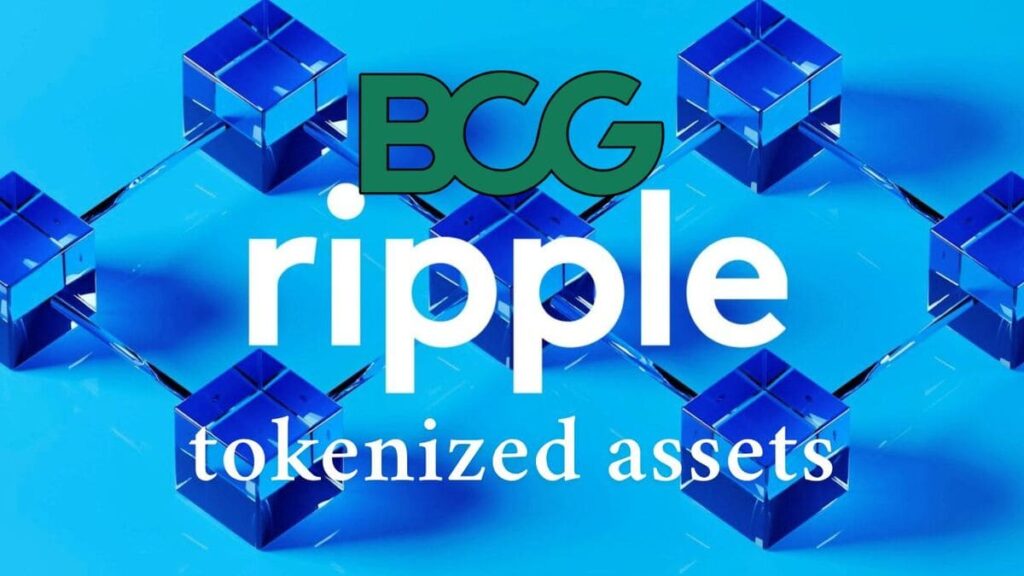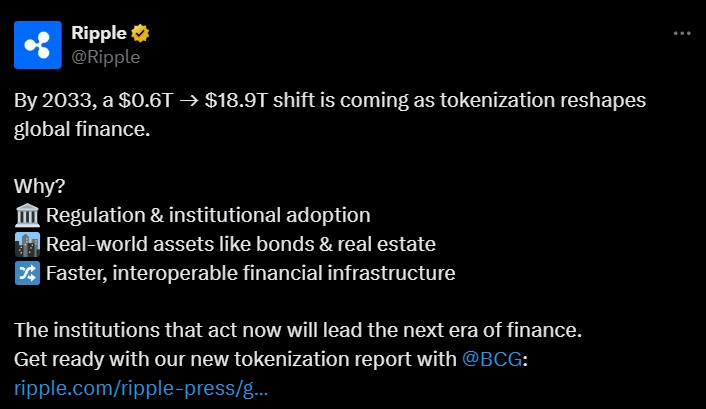TL;DR
- Ripple and Boston Consulting Group estimate that the tokenized assets market will grow from $0.6 trillion to $18.9 trillion by 2033, with an annual expansion of 53%.
- XRP and the stablecoin RLUSD are Ripple’s key tools to facilitate operations in this market, with daily volumes reaching up to $150 million.
- The report identifies progress in regulation and infrastructure, although some technical and regulatory issues still require collaboration between institutions.
Ripple released a new report in collaboration with Boston Consulting Group projecting explosive growth in the tokenized assets market.
According to the document, this sector could reach $18.9 trillion by 2033, starting from a current estimate of $0.6 trillion. By 2030, the intermediate estimate stands at $9.4 trillion, which would imply a compound annual growth rate of 53%. The study outlines a structural transformation of traditional financial markets through the digitization of physical and financial assets on the blockchain.
Tokenization converts instruments like stocks, bonds, real estate, or funds into digital representations that can circulate 24 hours a day with traceability, fractionalization, and automated compliance. The report describes three phases of adoption: first, the conversion of conventional financial products; then, the expansion into more complex assets; and finally, the direct integration of these instruments into the real economy. Entities such as BlackRock, Fidelity, and JPMorgan have already begun adoption processes under this model.
Ripple Adapts Its Products to New Market Trends
Ripple is betting on XRP as a crucial tool in this market due to its efficiency in international transfers. It is also promoting the use of RLUSD, its dollar-pegged stablecoin, as a tool to facilitate operations without exposing investors to the typical volatility of other crypto assets. Its stablecoin already exceeds $300 million in circulation and moves around $150 million daily.
The report also highlights factors supporting this trend. Regulatory clarity is advancing in regions like the European Union, Switzerland, and the United Arab Emirates. At the same time, technical infrastructure—such as custody solutions and digital wallets—has reached a sufficient level of maturity to enter a phase of widespread adoption. In addition, the combined interest of banks and tech firms is generating momentum that accelerates the ecosystem’s expansion.
Despite the progress, challenges remain, such as technological fragmentation and regulatory differences across jurisdictions. However, various stakeholders are already working on shared standards and joint solutions to overcome these barriers. Ripple states that the current moment calls for a shift from pilot projects to operational implementations.













